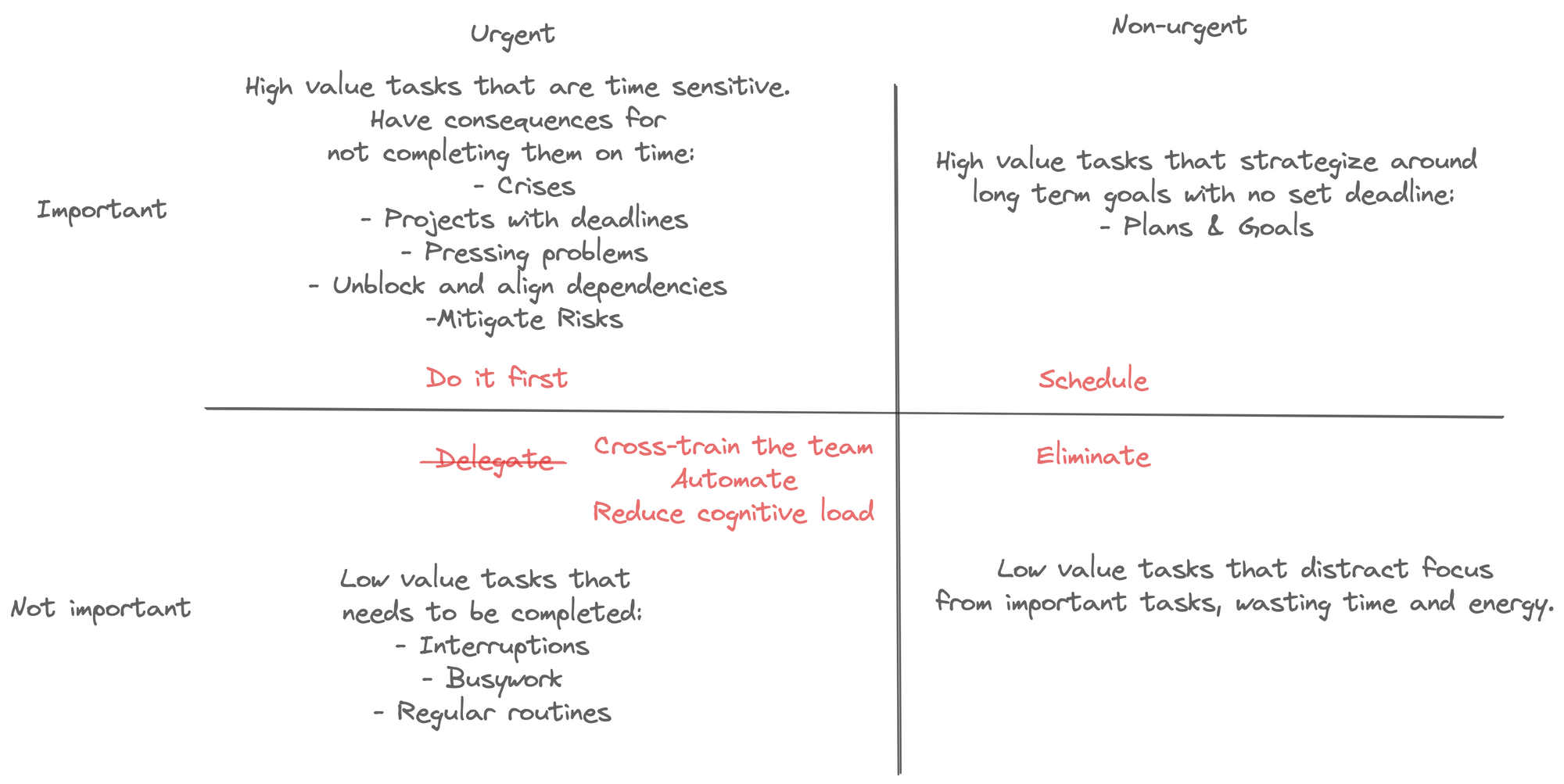One of the most critical skills for technical leaders, engineering managers, and product managers is to know how to prioritize the team's work.
To discuss this matter, I assume you are part of a team with a planning cycle and that your team has already aligned a roadmap with the rest of the organization. Additionally to the roadmap, the team must perform routine and unplanned work that will pop up during the planned cycle.
An excellent place to start is to use the Eisenhower Matrix to separate the team's tasks into four quadrants depending on whether they are important vs. non-important and urgent vs. non-urgent.

The Eisenhower method of decision-making suggests an action for each of the tasks categorized in each quadrant:
- Important and urgent tasks should be done first (as soon as possible).
- Important and non-urgent tasks should be scheduled.
- Non-important and urgent tasks should delegated.
- Non-important and Non-Urgent tasks should be avoided/eliminated.
The method is designed for prioritizing a person's tasks, but the same principles can be applied to a team. The only change here is that, as a team, you can't "delegate" tasks, so the team should aim to automate, reduce the cognitive load, and cross-train non-important and urgent tasks.
Here are a few more tips:
- Identify your dependencies early on. So other teams can plan for the work you need them to do to help your team reach their goals.
- Focus on delivering value, not meeting plans: Do not obsess about meeting the roadmap. When new requests arrive to the team, evaluate if those are more valuable than what's on the roadmap.
Follow me on Twitter or subscribe to the newsletter for more articles on software engineering leadership and troubleshooting software engineering teams' problems.


